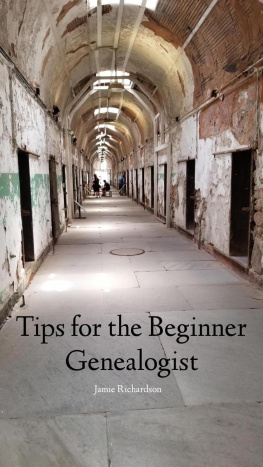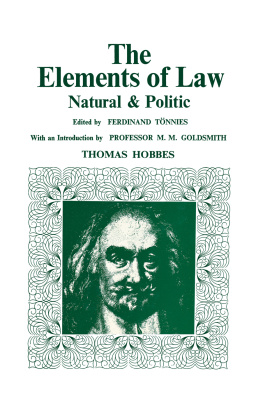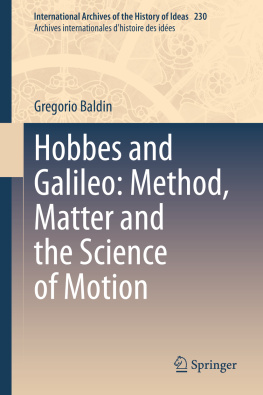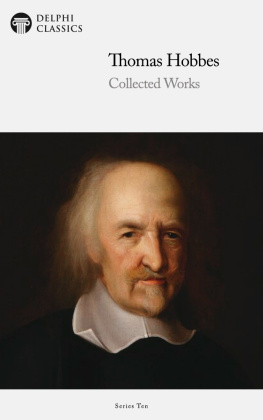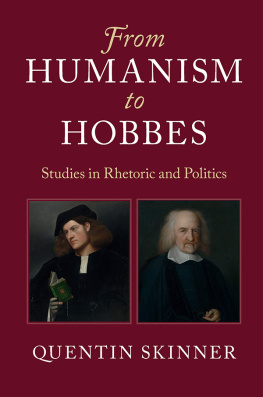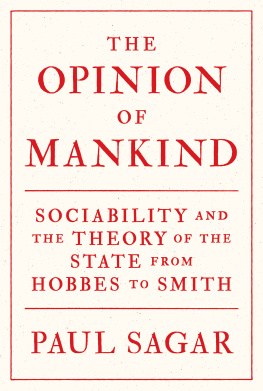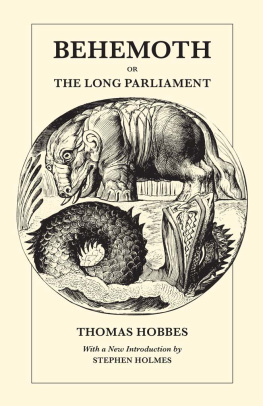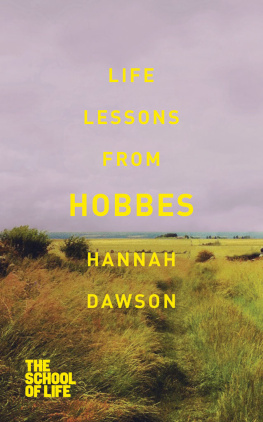Kramnick - Actions and Objects From Hobbes to Richardson
Here you can read online Kramnick - Actions and Objects From Hobbes to Richardson full text of the book (entire story) in english for free. Download pdf and epub, get meaning, cover and reviews about this ebook. publisher: Stanford University Press, genre: Religion. Description of the work, (preface) as well as reviews are available. Best literature library LitArk.com created for fans of good reading and offers a wide selection of genres:
Romance novel
Science fiction
Adventure
Detective
Science
History
Home and family
Prose
Art
Politics
Computer
Non-fiction
Religion
Business
Children
Humor
Choose a favorite category and find really read worthwhile books. Enjoy immersion in the world of imagination, feel the emotions of the characters or learn something new for yourself, make an fascinating discovery.

- Book:Actions and Objects From Hobbes to Richardson
- Author:
- Publisher:Stanford University Press
- Genre:
- Rating:5 / 5
- Favourites:Add to favourites
- Your mark:
- 100
- 1
- 2
- 3
- 4
- 5
Actions and Objects From Hobbes to Richardson: summary, description and annotation
We offer to read an annotation, description, summary or preface (depends on what the author of the book "Actions and Objects From Hobbes to Richardson" wrote himself). If you haven't found the necessary information about the book — write in the comments, we will try to find it.
Kramnick: author's other books
Who wrote Actions and Objects From Hobbes to Richardson? Find out the surname, the name of the author of the book and a list of all author's works by series.
Actions and Objects From Hobbes to Richardson — read online for free the complete book (whole text) full work
Below is the text of the book, divided by pages. System saving the place of the last page read, allows you to conveniently read the book "Actions and Objects From Hobbes to Richardson" online for free, without having to search again every time where you left off. Put a bookmark, and you can go to the page where you finished reading at any time.
Font size:
Interval:
Bookmark:

ACTIONS and OBJECTS from HOBBES to RICHARDSON
JONATHAN KRAMNICK
STANFORD UNIVERSITY PRESS
Stanford, California
Stanford University Press
Stanford, California
2010 by the Board of Trustees of the
Leland Stanford Junior University
No part of this book may be reproduced or transmitted in any form or by any means, electronic or mechanical, including photocopying and recording, or in any information storage or retrieval system without the prior written permission of Stanford University Press.
Library of Congress Cataloging-in-Publication Data
Kramnick, Jonathan Brody.
Actions and objects from Hobbes to Richardson / Jonathan Kramnick.
p. cm.
Includes bibliographical references and index.
ISBN 978-0-8047-7051-4 (cloth : alk. paper)
ISBN 978-0-8047-7052-1 (pbk. : alk. paper)
ISBN 978-0-8047-7512-0 (electronic)
1. English literature18th centuryHistory and criticism. 2. English literatureEarly modern, 15001700History and criticism. 3. Act (Philosophy) in literature. 4. Philosophy of mind in literature. 5. Causation in literature. 6. Philosophy, English17th century. 7. Philosophy, English18th century. I. Title.
PR448.P5K73 2010
820.9384dc22
2010010565
Contents
Preface
This book is about the literature and philosophy of action during the last half of the seventeenth and first half of the eighteenth century, the period that begins roughly with Hobbes and Rochester and ends roughly with Hume and Richardson. It features works that examine what happens when someone acts, when someone writes a letter or lifts her feet or kills or kisses, and so on. For many, the difference between actions and other kinds of events turned on the presence of mental states. Someone writes a letter because she wants to communicate information and intends for her reader to understand her. Her desire for the one or intention for the other causes physical movements of various kinds. And yet how does a mental state like desire or intention cause the body to move? This simple question was of vast significance for all kinds of writers during the period, and opened up literary and philosophical problems for our time as well as theirs, from how a work of writing can represent thought on the page, to how matter can be the locus of consciousness, to whether minds actually cause anything to happen after all.
Writing about the mind during the period took many forms and has been the topic of much important work in literary and intellectual history. The relation between mind and actions, however, remains relatively untapped and points in a number of unusual directions. For example, although this book is above all interested in the language of mental states, it does not make an argument about the growth of inwardness or interiority or the psychological subject during the period. Rather, considering actions leads in a different direction. Minds were understood to do many kinds of thingsfrom represent objects, to work through equations, to grievebut when they caused someone to act, they were understood to blend in some fashion with the rest of the world. For some, this kind of causal relation meant that minds were at bottom like everything else in nature. When these writers considered actions, they were often led to unexpected or unsettling conclusions: that the will might not be free, that all matter might be sentient or nothing sentient at all, that states of mind extend outside the head. For others, the topic of actions provided an occasion to block just these sorts of conclusions and to distinguish the place of mind and mental causes from other parts of the world.
The late seventeenth and early eighteenth century was indeed a lively time for the consideration of actions, with the combined emergence of empirical philosophies of mind and new literary forms designed to feature experience in often startling ways. Against this expansive backdrop, I follow the problem of actions from the cultures of Restoration-era science to mid-eighteenth-century social theory, from worries about political authority to the consideration of a commercial society. While I place importance on what we might call externalism, I also watch notions of the external shift from physical bits of matter in motion to the elaborate networks of law and exchange. My goal has not been to follow a single perspective as it grows to dominance, however, but rather to examine competing models of mind and action across the period and into ours. I thus examine writers who have been integral for literary studies along with those whose ideas might challenge our expectations on a number of topics: from where seventeenth- and eighteenth-century writers looked to find the sources of actions to what kinds of entities they considered to be conscious.
Actions and Objects has been generously supported throughout by Rutgers University. In the early stages, I received fellowship help from the NEH, the William Andrews Clark Memorial Library, and the Huntington Library. At the end, I was the beneficiary of a in the Yale Journal of Criticism. They have now been completely reconsidered and rewritten, but trace sentences remain.
One pleasure of taking some time to finish is accumulating so many debts of gratitude. Ive been extremely fortunate to test some of these arguments among a superlative group of graduate students over the years. I could simply not have written a word without their questions, responses, and quarrels. My period cohortLynn Festa, Paula McDowell, and Michael McKeonhas provided invaluable feedback and conversation. Also at Rutgers, Ive had the pleasure of working with Billy Galperin, Colin Jager, Meredith McGill, Jonah Siegel, Henry Turner, and Rebecca Walkowitz. The Mind and Culture seminar at the Center for Cultural Analysis provided a burst of intellectual energy and renewal just when I needed it most; our many guests and fellows will find their promptings and ideas scattered over these pages.
The same is true for the crew at Stanford, old friends and new: John Bender, Terry Castle, Denise Gigante, Joshua Landy, and Blakey Vermeule. It has come to seem that the broader eighteenth-century world is an expansive set of fascinating interlocutors, including Helen Deutsch, Sarah Ellenzweig, Marcie Frank, Jody Greene, Sandra Macpherson, John Richetti, Helen Thompson, and others who have listened to me talk about actions and minds over the years and who have helped to shape the argument in ways they might not realize. Parts of this book were delivered to audiences at Berkeley, Johns Hopkins, Princeton, Rice, Stanford, UCLA, the University of Chicago, and Yale, where audiences were curious and receptive and challenging in the best ways. James Kierstead, Mike Gavin, and my editor Emily-Jane Cohen all made it possible for this book to come together in the end.
It gives me great pleasure finally to thank those whose continued intellectual presence in my life I consider a tremendous gift: Jared Gardner, Elizabeth Hewitt, Jonathan Goldberg, Adela Pinch, Michael Trask, Michael Warner, and Bliss Kern. Bliss read the entire book and made it better.
ACTIONS and OBJECTS from HOBBES to RICHARDSON
Introduction: Nothing from Nothing
Things happen. Often we try to explain them. When Edmond Halley looked back on records of passing comets, he noticed that one seemed to appear every seventy-six years. He then thought hard about orbital velocity and gravity, drawing on what he knew about mathematics and physics. When a fashionable young man cut off a lock of hair belonging to a fashionable young woman, Alexander Pope wrote a poem. He thought hard about human actions, drawing on what he knew about motivation and desire. Halley and Pope both understood that neither comets nor cuttings come into the universe from nothing. Yet for Halley, the comets return didnt have anything to do with beliefs or decisions. The comet didnt choose to shoot by earth. Rather, its particular mass and distance from the sun put it on an unalterable ellipse. For Pope, the cutting of the lock had little to do with the properties of metal shears or strands of hair. The Baron chose to cut Belindas hair. Pope would like to know
Font size:
Interval:
Bookmark:
Similar books «Actions and Objects From Hobbes to Richardson»
Look at similar books to Actions and Objects From Hobbes to Richardson. We have selected literature similar in name and meaning in the hope of providing readers with more options to find new, interesting, not yet read works.
Discussion, reviews of the book Actions and Objects From Hobbes to Richardson and just readers' own opinions. Leave your comments, write what you think about the work, its meaning or the main characters. Specify what exactly you liked and what you didn't like, and why you think so.

